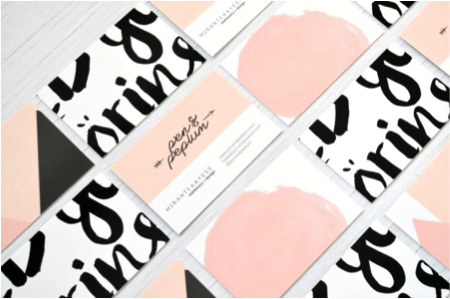As a young professional attempting to break into the ever-challenging post-graduate job network, it is extremely important to develop a sophisticated professional identity that will be distinctly recognized by potential employers. This identity should be clear in your resume (check out Taylor Logeman’s article on resume design here) the language you use when interacting with potential employers or members of your professional network, and your business cards. Yes, I did say business cards, and no, they are not extinct. Business cards are still an extremely important part of building your professional network and your ability to share it with others.
Since business cards are such an integral part of your professional identity, it is important to ensure the information and design of your card parallels both your skills and your personal marketing. While it is considered practical to design your business card in a conventional way, designing an unconventional, but professional, business card will give you an edge above the rest of the applicant pool, for your unique design or approach will hopefully be remembered and admired by your potential employer. Although, before you begin to develop a personal brand on your business card, it is important to understand the necessary information to be included on the card. One of the most important factors in designing a business card is providing the information that would be useful to a potential employer, including your name, career label, email address, and business phone number, allowing the individual to have a method to contact you.
Since you have considered this information, it is important to contemplate font and text sizing and location. While there are multiple ways to present information on a business card, the most used method is to present all the information on one side of the card, leaving one side either blank or with minimal design. In order to stand out from the conventional design template, it is important to consider using two sides to present information on your business card. In the example above, it is clear the creator used the space on both sides to convey her skills and information. The creativity displayed on the card presents the individual’s skills in Adobe Illustrator, Photoshop, or another creative medium used to design the card. It also demonstrates the individual’s knowledge of design, text placement, and color scheme.
When incorporating text, it is necessary to decide whether you would like to use a left, center, or right text alignment. When working with related text, it is best to keep them within the same text alignment and group related elements in close proximity with one another. Once again, in the example provided above, the company name, as well as the below information, is center aligned, although they are grouped separately: the company’s contact information is grouped distinctly from the name, whose larger text denotes it as the most important information on the card. Typically, it is best to make your name, or your company’s name, the largest text on the card. It may also be best to experiment with bolding your name, as well.
Knowing the basics to developing a creative, but professional, business card is one of the first steps to creating a personal brand, as well as increasing your professional development. Now that you know the essentials, it’s time to begin designing your own business card! Good luck!



 Follow
Follow